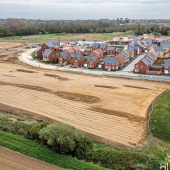Spring statement: what it means for the built environment

Of UK Chancellor Rachel Reeves’ Spring Statement in March, Michael Cook, Chief Executive Officer of Leaders Romans Group, commented that the challenge of making £15bn worth of cuts to public spending was never going deliver everything on the property industry’s wishlist, but that the £600m for construction training was very welcome.
He suggests this will fund “more vocational degree courses to equip people with the necessary skills for the construction and property sectors; and a greater championing of the non-university route into these roles”.
He also welcomed “the £2bn top-up for the Affordable Homes Programme, which will provide up to 18,000 new social and affordable homes. Since council housing effectively ceased four decades ago, the private rented sector has fulfilled an important role in preventing homelessness. Today, with demand for rental properties outpacing supply, it’s good to see the government helping to address this need.”
RICS CEO Justin Young agreed, saying: “The investment to build 18,000 new social homes is an enormous boost for the sector. Alongside ongoing reforms to planning, this should provide increased confidence for housebuilders across the country.”
However, the Environmental Industries Association expressed significant concerns over the proposed cuts to the Department for Environment, Food and Rural Affairs and subsequently the Environment Agency expected in June as part of the Spending Review. “These cuts threaten to undermine the progress made in environmental protection and conservation efforts. The reduction in funding could lead to job losses and hinder the ability of these agencies to effectively manage and protect the UK’s natural resources.”








